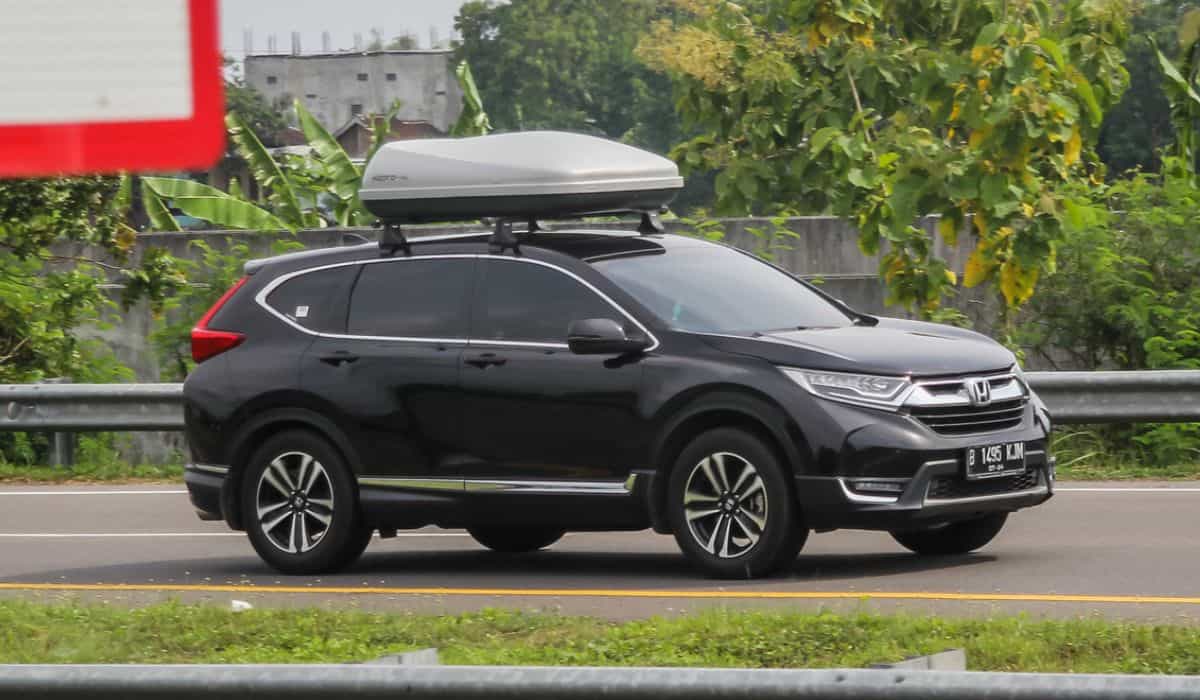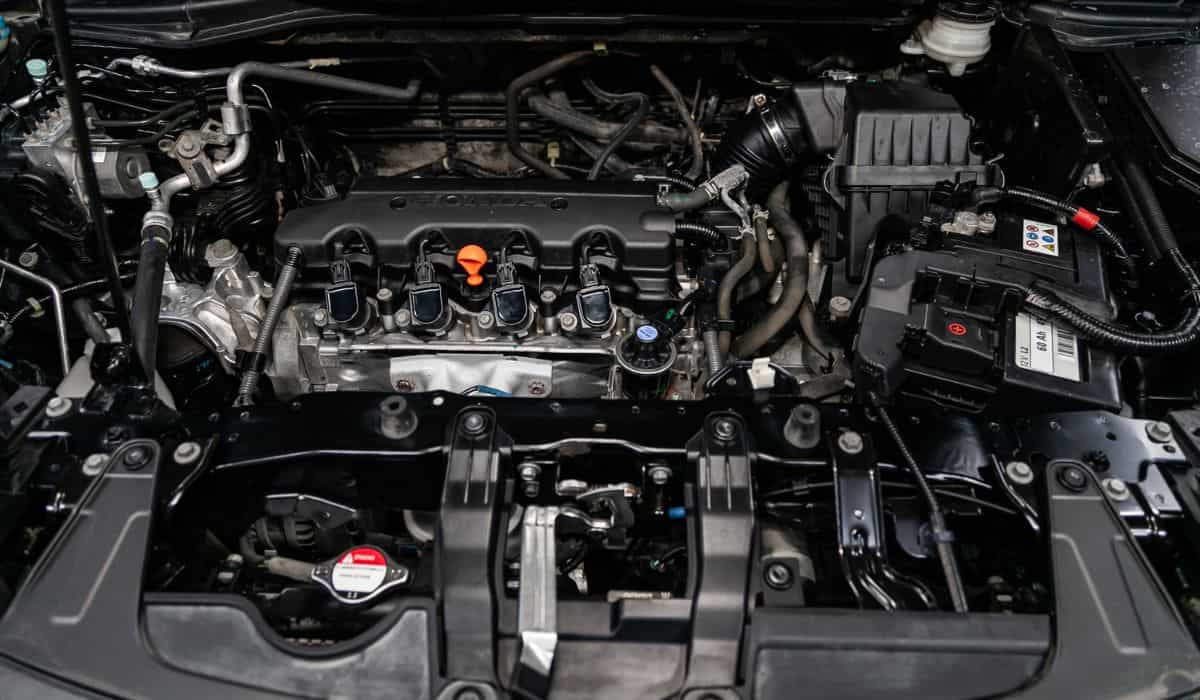Honda CRV Reliability: Which Models Are The Least & Most Reliable
Honda is renowned for producing a lot of great vehicles, and the Honda CR-V is one of the more popular cars. While a majority of people like the Honda CR-V, a few models aren’t that reliable and have a number of issues.

The Honda CR-V model years to avoid are 2002, 2007, 2008, and 2011-2017, except for the 2013 model. The most reliable model years are 2022, 2021, 2020, 2019, 2013, 2010, 2009, and 2001. The unreliable models experience engine problems, tire issues, and electrical system failure.
Now, let’s take a look at which Honda CR-V model years are the most and least reliable and the common problems you’ll face in each model.
Which Honda CR-V Model Years Should Be Avoided?
If you don’t want to spend your hard-earned money on constant repairs and trips to the mechanic, look out for some of the Honda CR-V models out there in the market.
The Honda CR-V model years that you should avoid are:
1997-2000 Honda CR-V Models
These models were part of the Honda CR-V’s first generation. As with all new cars, the initial model had many engine and electrical problems as it was a test variant. These problems continued until the release of the 2000 model before they were gradually resolved.
The 2000 model had complaints about its engine quality. However, the main concern was safety due to faulty airbags. The 2000 Model had defective airbags which led to a series of recalls.
The Honda CR-V 2002 Model
A major issue with the 2002 model was that the car had a tendency to overheat. Also, the headlight bulbs would often fail and had to be replaced.
The stabilizer bar link would also wear out quickly, making noise as the car drove over bumps. The fuel ratio sensor was faulty, and there was a glitch in the check engine light.
A few buyers reported the A/C compressor had fallen apart and that the metal particles were contaminating the system.
Overall, this model isn’t recommended, and the replacements add up to quite an expensive repair, and many are recurring problems.
The Honda CR-V 2007 Model
The first model from the third generation of the Honda CR-V was the 2007 one. This model had more complaints from buyers, and a total of 11 recalls. There were electrical problems, malfunctioning door locks, and even an airbag recall.
A few of the cars’ air conditioners did not function properly. Even the tire pressure sensors (TPMS) were failing.
Moreover, the car made a lot of road noise, according to some users. A criticism of the design was the lack of center console storage and thick rear pillars which would limit rear visibility.
The car had an excessive oil consumption problem, and the door lock actuators had to be replaced often. To add to the growing list of problems, users complained about the check engine light and growling noises coming from the car.
With a numerous list of problems that could occur in this model, it would be best not to buy it.
The Honda CR-V 2008 Model
The 2008 Honda CR-V had 10 recalls and multiple recurring electrical problems. There were problems with its engine and transmission. Many drivers also reported the clutch went out, which meant the entire compressor had to be replaced.
While not all cars have these issues, it’s best to be on the safe side and avoid this model if you’re buying a used CR-V.
The Honda CR-V 2011 Model
This model had a huge safety concern and the brakes and steering were often not functioning properly or just wouldn’t work. Sometimes, the car would accelerate when the driver tried to brake, which would place drivers in dangerous situations.
To make matters worse, the car would also have difficulty starting and then would vibrate excessively when being driven. There was also a fuse problem with the car.
The model’s interior accessories would also malfunction from time to time. The auto-locking door did not work properly, and there were complaints that the seats were uncomfortable.
Honda recommended replacing the tires every 10,000 miles, which isn’t the norm. On average a car tire is supposed to last around 50,000 miles. Expecting that their customers replace the tires every 10, 000 miles is part of the major design flaw of this model.
The 2011 Honda CR-V should definitely be avoided. Its safety and reliability are one of the worst in the models available.
The Honda CR-V 2012 Model
The 2012 Honda CR-V had a redesign and was the first model of the new fourth generation of Honda CR-V. Despite this, it had three recalls due to compressor leakages and brake issues. Many buyers complained that the brakes were slipping and that the caliper was faulty.
There were also electrical issues as well, such as the battery dying. But while this model was an improvement on the previous ones, it’s still not worth getting.
The Honda CR-V 2013 Model
The 2013 CR-V had engine problems and used to make grinding noises. The VTC actuator was also problematic. However, this model was recalled only once.
Another issue with this vehicle is the ABS would activate when braking normally. The ABS warning light would first appear after a long drive and would pulse each time the brakes were used.
The roof upholstery also wasn’t up to the mark, although this was a minor issue. While this model didn’t have any major safety issues, it’s still problematic and should be avoided.
The Honda CR-V 2014 Model
The 2014 CR-V’s most frequent issues were the engine noises brought on by a defective VTC actuator, its uncontrolled acceleration, and the tire pressure gauge warning light not functioning properly due to a TPM issue.
These issues were also minor, but they appeared frequently, and it’s likely you’ll have to spend something on repairs when buying a used 2014 CR-V.
Which Honda CR-V Model Years are the Most Reliable?

Some models of the Honda CR-V have gotten great feedback and are considered very reliable. These models are the way to go if you’re on the lookout for compact SUVs with a modern design and reliable engine at a reasonable price.
The Honda CR-V model years that are considered reliable by most drivers are:
The Honda CR-V 2022 Model
The 2022 model has been updated with the latest technology and is usually repair-free. This model doesn’t usually suffer from any engine problems or electrical system failures. However, it’s only been out for a few months, and only time will tell if it’s really reliable in the long run.
The Honda CR-V 2020 Model
The 2020 model comes with a hybrid engine option and a CVT transmission which is one of the best available in the market. The 2020 model scored the highest rating out of all the models and has received the fewest complaints.
However, there have been several recalls of the CVT transmission, and apparently, the problem was resolved.
The Honda CR-V 2016 Model
In 2016, there was an addition of paddle shifters, additional trims, and LED daytime running lights. This model was less problematic than the 2018 model. It also didn’t have vibration problems or idle driving issues. If you’re looking for a more budget-friendly CR-V, this model is ideal.
Which Honda CR-V Models Have Transmission Problems?
The Honda CR-V 2020 is the model most renowned for its transmission problems. There were three recalls in 2020 because of transmission problems.
In 2015, a Honda a class action lawsuit was filed against Honda due to the 2015 CR-V, which was manufactured with a defective CVT transmission system causing the car to rattle and vibrate. The transmission wouldn’t go into gear; there were shifting difficulties and different noises coming from the engine.
However, there were multiple Honda CR-V models which had transmission problems. These included 2002, 2003, 2007, 2008, 2009, 2010, 2012, and 2013 models.
What are the Most Common Problems with Honda CR-V?

The most common problem with the CR-V is the CVT transmission issues. Depending on the model, you may also have to deal with brake problems, acceleration issues, malfunctioning door locks, and electrical problems.
Let’s discuss the main problems you can expect to face with a Honda CR-V:
Transmission Problems
The main issue with most CR-V models is the faulty transmission.
There were numerous complaints about the vehicle jerking in different gears. In some cases, the transmission had to be replaced below the 100,000-mile mark. This is a huge blow to buyers as the transmission’s life expectancy normally is the same as the vehicle’s.
The problem seems to originate from the corrosion of the shift cable linkage. The vehicle sometimes refused to shift out of park, would stall, or either accelerate or decelerate without the driver’s input.
Noises and Vibrations
A lot of complaints about the Honda CR-V are about how the car vibrates so much to the point of disturbing the driver. Some reports claim the car makes grinding noises at ignition or the engine starts rattling.
Acceleration Issues
There have been many reports regarding the car’s acceleration which have raised a lot of concern for people. Some models experience delayed acceleration.
A worse problem is unwanted acceleration when you try to press the brakes. Either way, this is one of the most dangerous problems a car could have.
Brake Problems
Honda CR-Vs have been known for brake failures, and many vehicles have been recalled due to these. This is a huge safety concern, especially considering this problem often arose in new vehicles, so worn-out brakes weren’t a culprit.
Tire Problems
Many drivers have issued complaints that a lot of the models that came into production already had signs of wear on them. Moreover, the drivers noticed the wear time of some models’ tires was only 10,000 miles, which is a huge gap from the normal 50,000 miles.
Battery Problems
Honda CR-V owners have reported that the battery of many models is often faulty. It sometimes dies so quickly it could become a safety concern. Other electrical problems often accompany this.
Is it Worth Buying a Honda CR-V?
A lot of people tend to avoid some of the CR-V model years due to their safety concerns. Its problems have led to multiple accidents and lawsuits over the years. However, it’s still a reliable car and one of the most popular crossover SUVs for a reason.
The CR-V compared to its competitors in the market comes out on top. The special features exclusive to only the CR-V are that it’s more spacious, provides heated seats, Walk Away Auto Lock®, and dual-zone automatic climate control, giving you the option to set your own temperature in your cabin.
To sum up: yes, it’s worth getting a Honda CR-V, but only if you get one that’s reliable and problem-free.
Additional CRV Articles:
- What You Need to Know About Honda CR-V Towing Capacity (2023–2025)
- Honda CRV Reliability: Which Models Are The Least & Most Reliable
- 5 Honda CRV Years To Avoid (What Year Honda CRV Should I Avoid)
- Honda CRV Maintenance Codes: What You Need to Know
- How to Reset Low Tire Pressure Light on Honda CRV: Step-by-Step Guide

Would it be better for me to go with the honda crv 2009 or 2013 overall…